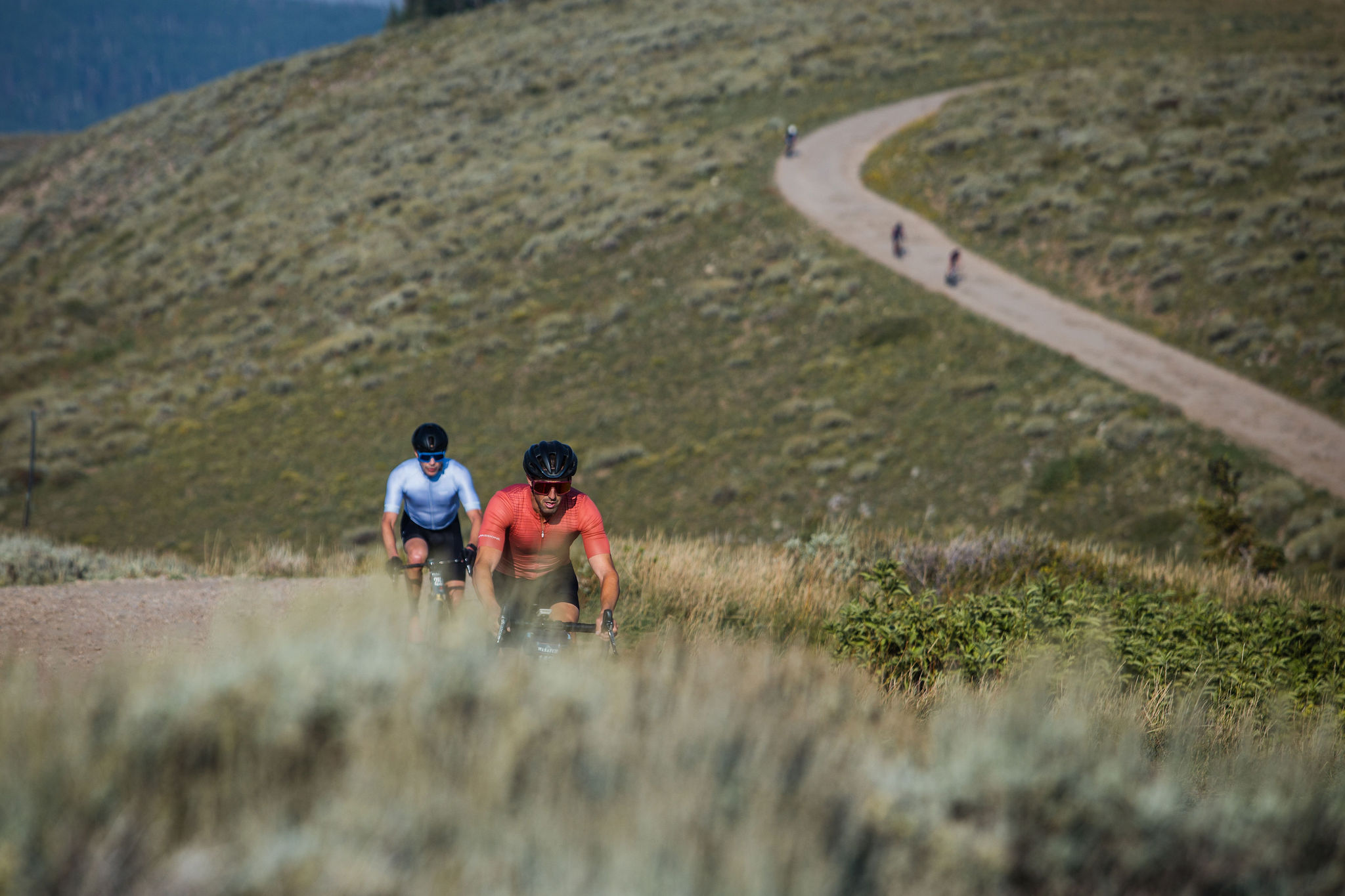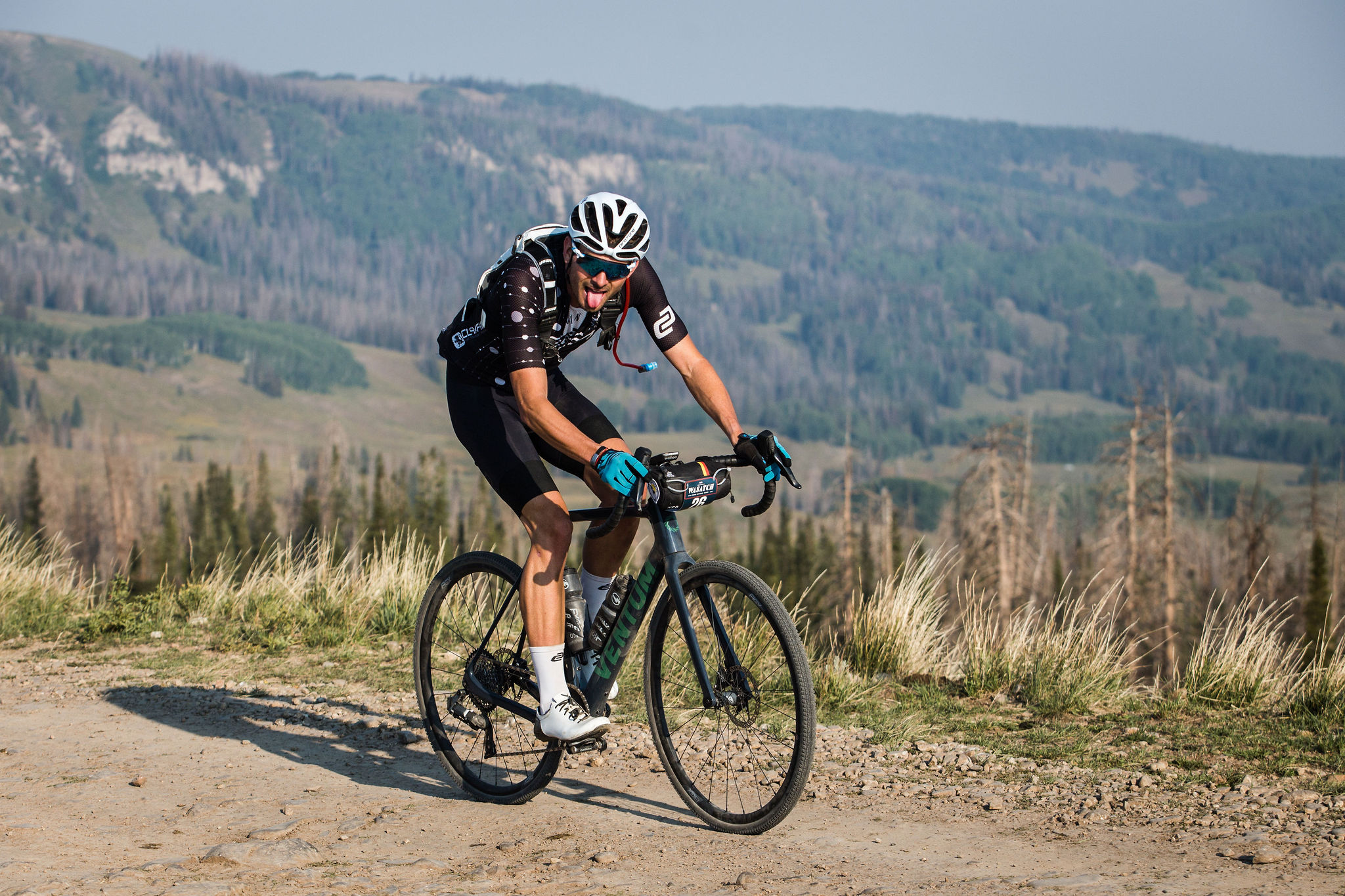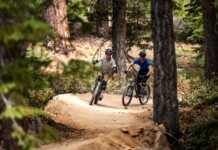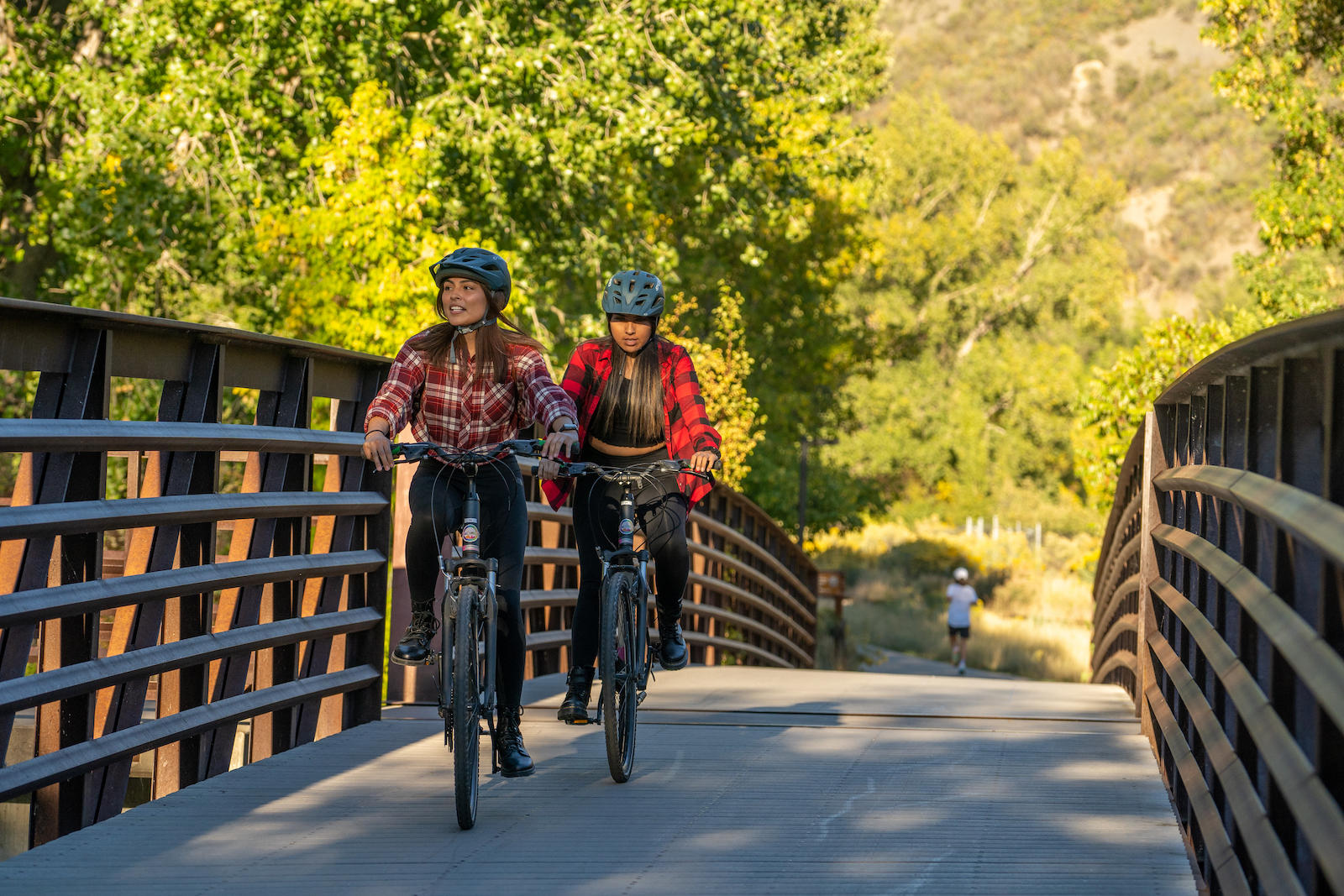After a successful first edition in 2021, the Wasatch All-Road Bicycle Race returns to the Heber Valley in beautiful Wasatch County, Utah on August 27, 2022. Brainchild of Utah-native and former professional cyclist Jeffry Louder, the event is being billed as Utah’s toughest gravel race, featuring gravel’s hardest climb in the Wasatch Wall. Cycling West recently spoke with Louder about the event.
Cycling West: How did the Wasatch All-Road event come about? Tell us more about yourself and how you became involved in the event.
Jeffry Louder: My background is in professional cycling and I often thought of putting on an event that would showcase the area around my hometown of Salt Lake City. Thanks to events like the Tour of Utah it was no secret that the Wasatch range held some amazing climbs, and I wanted this race to be a one-day version of what I love most about riding in Utah — hard climbs and beautiful scenery.
When I first started forming the idea of the Wasatch All-Road, I was attracted to the idea of making it a gravel race and showcasing roads that were not as well known. I was fortunate to partner with Ventum Racing in 2019 and since they are based in Heber, Utah, we wanted to do something in their big backyard. I already had my eyes on the zone where the race now goes and the new partnership made it a no-brainer to build a route that would check all the boxes. The fact that the Heber Valley is easy to get to thanks to its central location in the Mountain West and proximity to SLC International Airport made it all the better. We initially planned for a race in August of 2020 but, of course, life had other plans. It was amazing to realize the concept in 2021 and we can’t wait to have everyone back in the Heber Valley for another year on August 27, 2022.
CW: What lessons did you learn from the first year, and how has that affected preparation for year 2?
JL: To be honest, the biggest lessons I learned were about myself and what I could and could not do. Putting on an event like this is a massive undertaking and it took a lot of me, my family, my friends, and the local community to make it happen. We pulled off a very successful event in 2021 but with the first year in the rearview mirror we knew we wanted to improve on the success but do it all in a more sustainable way. I have been fortunate to enlist more great people to help out and fine-tune the details to make this year run smoothly and make it a great day for the participants.

CW: Have there been any major changes to the course for 2022? What kind of terrain and road conditions can riders expect?
JL: We have made some course change and additions and we have a new venue for 2022. The race now starts at Soldier Hollow and with the new location we have a great home to help the event grow and better serve our participants.
The new start/finish location at Soldier Hollow has changed the formatting of the courses. We have added a new route this year called the Mid Yeti which is a 75-mile race with around 8,000 feet of climbing.
The Full Yeti, though utilizing a major portion of the route it followed last year did have to lose part of what we called the Strawberry Out-and-Back to keep the distance and elevation gain similar to last year. The Full Yeti will be 100 miles and around 11,000 feet of climbing.
Both the Full and Mid will still tackle the Wasatch Wall which is really what sets this race apart from anything else out there. The Wasatch Wall is the first climb of the day and gains around 3,800 feet in only 11 miles. Riders can expect every type of surface and terrain from paved rural roads, to buffed out gravel, to chunky and loose jeep roads during the day. The climbing can be quite intense, especially on the Wasatch Wall but the reward is access to an amazing, high alpine wilderness with stunning views.
Last year’s Mini Yeti has also been changed into a more approachable circuit within the grounds of Soldier Hollow. This route is still challenging and uses the paved and gravel roads within Soho’s network of trails but stays close to home and will be great for newer racers and those that want a shorter day. Both the Full and Mid will also finish on this circuit for a final 4-mile taste of gravel racing to cap off a big day.

CW: Is the event being promoted as a competitive race or a non-competitive ride (or both)? What sort of prizes can participants expect, and how deep will prizes be awarded?
JL: The Wasatch All-Road is a gravel race but this discipline, by its nature, leaves space for each individual to participate how they choose. The event will be timed and prizes awarded but I feel that gravel is an inclusive environment that not only encourages duking it out with the competition but also allows people to individually test and challenge themselves in a positive environment.
Our Pro/Open Full Yeti category has a $10,000 prize purse which will be split evenly between the male and female podium getters and we have awards for the top three in each Full and Mid category as well as for the top finishers in the Mini Yeti. I personally feel that anyone that tackles the Wasatch All-Road and pushes their limits is a champion. Celebrating with friends old and new at the finish line is a big part of gravel racing and I can’t wait to see everyone after the race and hear their W.A.R. stories. We have a festival at the end with a free meal and drink for all participants and we encourage friends and family to come out to Soldier Hollow to enjoy the day with the racers.
CW: What sort of bike is best suited for the terrain? What other gear or equipment would you recommend riders carry with them?
JL: Preparation and planning will be an important part of a successful ride. The climbs are long and steep, particularly the Wasatch Wall, which both the Full and Mid Yeti distances will tackle. Besides being physically and mentally prepared, proper bike set up will help ensure a great day. Gearing and tire selection is very important for the terrain and we have had success using a gear-ratio lower than 1:1 (for example, a 42 front ring paired with 46 rear cog) with 42mm (or larger) tires designed for loose gravel. This is mainly for some steep and loose uphill sections but there are also sections of chunky descending where bigger tires will come in handy.
Mountain bikes are allowed and are a nice way to climb the Wasatch Wall and get down some of the more technical descents. Beside these areas, the terrain is perhaps more conducive to a gravel specific rig but, with so much varying terrain, there may be no perfect bike and it is highly likely that whatever bike one chooses to ride, it won’t be the right thing at some point. Choose wisely as riders may only ride one bike, no mid-race equipment changes will be allowed.
Riders will be expected to carry their own hydration bottles/bags and to replenish them at the Aid Stations. There will be no hand ups or mechanical support on course. We ask that riders please assess their ability and needs and plan accordingly. Beginning the ride fully stocked with enough food and drink to make it to the first Aid Station and beyond will be important. If riders need any specific items (special food or drink mix), they should carry it with them and bring enough for the duration. Carrying a hydration pack and/or on bike bag would be a good choice for anyone racing the Full or Mid Yeti. Riders will also need to carry equipment to deal with mishaps (tubes, plugs, CO2, tools, etc.). SAG vehicles will be on course to assist those that need it, but riders are expected to be prepared for the challenges of the route.
CW: Will there be any sort of neutral support out on course in case of mechanicals, or are riders responsible for all of their own mid-race repairs? Are riders allowed to accept aid from other riders?
JL: Being prepared for the elements and terrain as well as carrying enough water and food will be critical – riders will need to start with their own water bottles/hydration packs and refill them at the aid stations. All riders are expected to be self-supported and to utilize only the aid stations for fuel and hydration — no outside help is allowed. Each athlete is also expected to be mechanically self-sufficient; carrying equipment to repair flats and deal with other potential bike issues is encouraged. Finally, the weather at 10,000 feet can change abruptly; being prepared for all conditions, even snow, will be important. SAG wagons will be on course to help those that have fallen behind.
CW: What can you tell us about the Heber Valley, and what make it so good for cycling.
JL: The Heber Valley is a growing area along the Wasatch Back but it still maintains its rural charm. Being surrounded by the Wasatch and Uinta Mountains make it an ideal spot for gravel riding and bike riding in general. The rural country roads are great for road riding, there are numerous amazing mountain bike trails, including at Soldier Hollow, and the seemingly limitless network of gravel roads within the Uinta National Forest and Utah State Parks make the Valley an ideal launch pad for any adventure by bike.
CW: What else will riders visiting the area, especially for the first time, be able to do to enhance their visit while off the bike?
JL: There are so many great things to do in the area besides ride a bike: The Provo River bisects the valley, and the fly-fishing access is phenomenal. Both Deer Creek and Jordanelle Reservoirs are nearby for boating and water sports. The dispersed camping within the Uinta National Forest is easily accessible and a great getaway in amazing wilderness. The towns of Midway and Heber City both have great hotels and dining options.
Soldier Hollow itself is a former Olympic Venue and offers world-class cross-country skiing in the winter and an amazing network of singletrack trails in the summer; the event has also partnered with Uinta Recreation, and they rent side by sides, ATVs, and snowmobiles to drive and explore the roads and off-road trails in any season.
With Park City and Salt Lake City both a short drive away the options for fun get to be too numerous to mention. Go Heber Valley (https://www.gohebervalley.com/) is also an excellent resource for things to do in the valley. Heber Valley really is a great destination for the day, weekend, or a longer stay and The Wasatch All-Road is honored to be based out of such an amazing area. We are excited to share it with everyone coming out for the race and we hope they have a great visit.
CW: Is there anything else that you would like to add?
JL: We can’t wait for the event next weekend and can’t wait to host the gravel community at Soldier Hollow and the Heber Valley at the Wasatch All-Road.
Event Info:
Note: Registration is still open until 11:59 PM on Wednesday, August 24, 2022. Register now!
August 27, 2022 — Wasatch All-Road Bicycle Race, Ventum Racing, Heber , UT, The Wasatch All-Road features the toughest climb in gravel and postcard views in Utah’s hidden gem, Heber Valley. The event will offer three challenging distances, local food, entertainment, and a $10,000 prize purse split evenly between the male and female open categories., Jeff Louder, jeff@thewasatchallroad.com, http://www.thewasatchallroad.com








